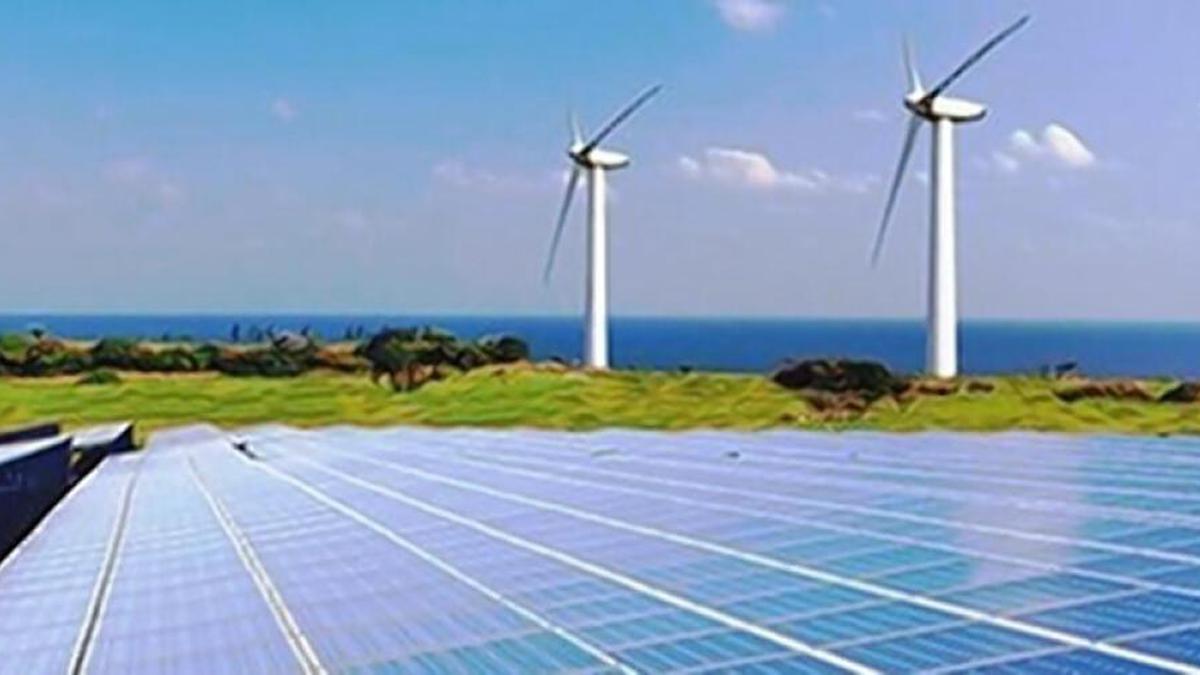
Renewables, hydro cross 40 per cent of India’s installed power generation capacity in FY23: Report – EQ Mag
As of now, the total RE capacity stands at 125 GW, with another 83 GW under implementation
According to research by the Council on Energy, Environment and Water’s Centre for Energy Finance (CEEW-CEF), India’s total installed power generation capacity reached 416 GW in FY23, of which 125 GW (30%) came from renewable energy (RE) and 47 GW (11%) comes from hydro. As of February 2023, 83 GW more RE is being put into operation. By 2030, India has promised to derive 50% of its total installed electricity capacity from non-fossil fuel sources as part of its Nationally Determined Contributions. The Market Handbook for 2022–23 from the CEEW–CEF identifies and examines trends that are essential to India’s energy transition.
Renewable energy once again dominated India’s expansion of power generation capacity in FY23; of the 17 GW installed, 92% were powered by renewables. The report also noted that solar (grid-scale and rooftop) continues to lead, making up 84 percent of newly added RE capacity. But throughout the course of the year, wind capacity additions more than doubled to 2.3 GW.
According to the report, “Total generation in FY23 was up by 11.5% compared to FY22. Contributing factors included a higher number of heat wave days and the absence of active western disturbances in Q1 FY23 and higher colder-than-usual days in December 2022 and January 2023.”
The report reveals that the entire proportion of renewable energy sources in India’s power generation mix is currently 11.8%. In contrast, net coal capacity expansion decreased by 60% over the previous year. In comparison to FY22, total RE generation climbed by 21.8%, while coal/lignite and large hydro generation increased by 6.1% and 12.0%, respectively.
In FY23 compared to FY22, the share of RE and coal/lignite increased from the standpoint of average daily generation, but the share of hydro fell.
While the share of RE increased to 11.8% from 10.8%, the share of hydro have fallen from 11.5% to 11.0%.. From 22.3% to 22.8%, it remained almost steady for RE + Hydro whereas the share of coal/lignite increased to 73.1% from 72.5%. The top five discoms in the most recent quarterly performance review, according to the MoP’s Ujwal DISCOM Assurance Yojana (UDAY) platform, were in Karnataka, Haryana, Madhya Pradesh, Uttar Pradesh, and Assam.
Pan-India AT&C losses decreased from 21.5% in 2020–21 to 16.5% in 2021–22, according to the performance of the power utilities report.
Gagan Sidhu, Director, CEEW-CEF, said, “There are several positive indicators of India’s renewable energy capacity maturing and evolving beyond the solar-focussed market of recent years. FY23 saw wind capacity addition pick up again and, in fact, the newly notified renewable purchase obligation (RPO) trajectory has a dedicated wind RPO to be met with projects commissioned after 31 March 2022. Further, procurement under innovative formats such as hybrids and RE plus storage accounted for 31 per cent of capacity auctioned during the year. Finally, over 4 GWh of standalone energy storage tenders were concluded.”
In March 2023, the Ministry of New and Renewable Energy directed renewable energy implementing agencies (REIAs) to conduct bids for 50 GW RE annually until FY28. The report found that ~10 GW of RE capacity was auctioned in FY23 and another 41 GW was under tender. This was also a significant year for energy storage in India – 4,020 MWh of standalone energy storage tenders were concluded.
Except for a few peaks in Q2 and Q3 of FY23, the majority of the listed RE stocks had a decreasing trend in that year. Throughout the year, the market (Sensex) largely stayed unchanged. Adani Green Energy, a developer of RE, experienced a severe decline in Q4 FY22, with its share price falling by 53.9% in March 2023 (compared to March 2022). When compared to March 2022, the share price of Sterling and Wilson Solar fell by 8.32%. When compared to March 2022, the share price of Borosil Renewables, which has a nearly monopoly in India’s solar panel glass industry, decreased by 29.2%. Inox Wind, a wind developer-manufacturer, saw a share price decline of 15.7% in March 2023 (compared to March 2022) whereas Suzlon Energy saw a 13.6% decline.
Ruchita Shah, Programme Associate, CEEW-CEF, said, “FY23 has been a pivotal year for renewable energy. First, the reverse auction mechanism for wind projects was scrapped and the MNRE announced a five-year RE bidding trajectory that directs the REIAs to conduct 50 GW bids annually till FY28. A long-term bidding trajectory will provide a clear vision to RE developers, enabling them to plan financing and manage their supply chain for a longer duration. In addition, it will support the domestic RE manufacturing industry in estimating the demand for solar modules, wind turbine generators and other components.”










